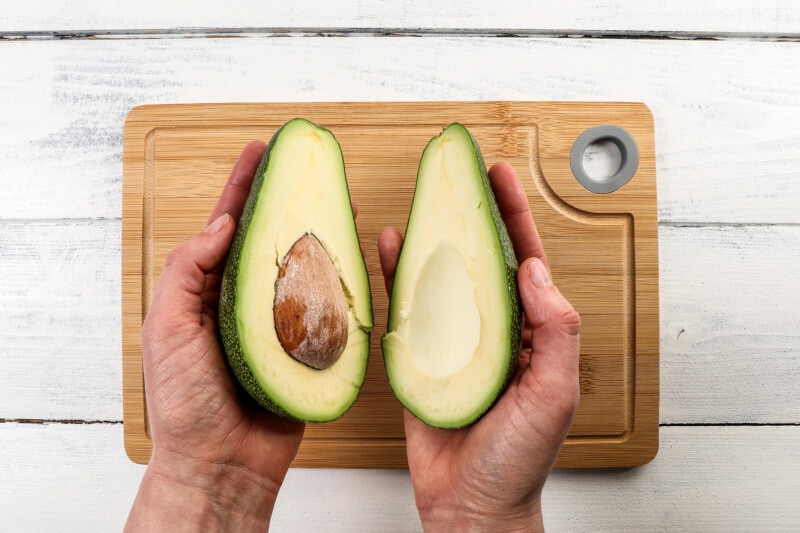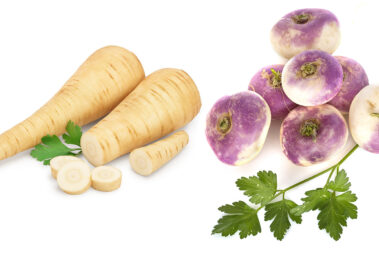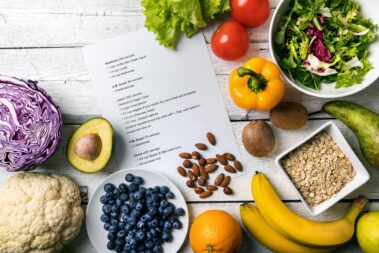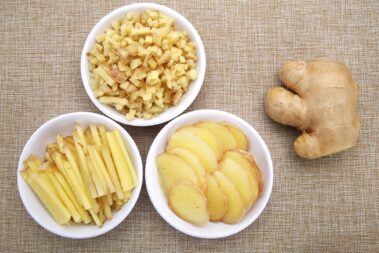There’s truly nothing better than a perfectly ripe avocado. That smooth, creamy, nuttiness is hard to fake and a must for any decent bowl of guacamole. But what do you do if your recipe calls for avocados and your avos are still rock hard?
First, don’t panic! I know that’s asking a lot, but rest assured, it is possible to ripen avocados quickly.
Below, we’ll show you 4 proven methods to ripen avocados fast, including one that takes less than 5 minutes! We’ll also tell you how to keep avocados from getting overripe and share some of our favorite recipes that feature avos in a starring role.
Table of Contents
How to Know When an Avocado is Ripe
Finding a perfectly ripe avocado at the store is tricky. These fragile fruits are intentionally shipped while unripe to help prevent damage. When they do finally ripen up, they’ll only stay that way for a couple of days before becoming overripe.
When selecting an avocado at the store or testing your own avos for ripeness, check these three things:
- Color – Avocado skin darkens from green to brown as the fruit matures. Black avos are overripe and likely to be squishy when squeezed.
- Texture – The bumpy skin of avocados tends to become smoother as the fruit ripens. Once overripe, dehydration causes the skin to wither and become lumpy once again.
- Feel – Ripe avocados will give slightly when you apply pressure with your fingers. This give will be similar to a ripe peach—soft but not squishy.
If you can’t find a ripe avocado at the store, don’t fret. Look for uniformly dark green fruits without any bruising or light brown veining on the skin. Plump, uniformly shaped fruits are likely to have the best flavor.
Once at home, you can use one of our methods below to hasten the ripening process so you can use your avo sooner.
4 Ways to Ripen Avocados
Below, you’ll find 4 ways to soften up avocados. We’ve ordered them by which process produces the best results in terms of final texture and flavor. But, if you’re in a hurry, don’t be afraid to skip down the list to find our fastest method.
Method 1: In a Paper Bag
Like most fruits, avocados release ethylene gasses to activate enzymes that expedite the ripening process. Concentrating these gasses around the fruit hastens ripening. The more ethylene present in this concentration, the faster your fruit will be ready to enjoy.
Placing an avocado in a paper bag and rolling the top down helps trap ethylene gas. Placing another ethylene-producing fruit in the bag with the avo, increases the concentration and makes ripening happen even faster.
To superspeed your avo’s ripening process, follow these easy steps:
- Place the avocado in a paper bag.
- Add another ethylene-producing fruit to the bag. Bananas work really well, but mangoes, papayas, stone fruits, apples, and tomatoes will also get the job done.
- Roll the top of the bag down to seal it.
- Place the bag on the counter in a warm location.
- Check the progress of the avo daily and remove it from the bag once soft.
This process of ripening takes about 1 to 3 days, depending on how hard your avocado was to begin with. Once soft to the touch, the avocado is ready to be cut up or mashed for your favorite recipe.
Pro Tip: Always use a paper bag, never a plastic one. Paper bags trap ethylene while allowing moisture to escape to prevent your ripening fruit from becoming moldy.
Method 2: In the Oven
The above method is the only true way to ripen fruit faster in your home. But there are sneaky ways you can soften up an avocado that is not yet ripe.
This method and the following ones don’t technically ripen avocados. Instead, they use heat to mimic the cell breakdown process normally activated by ethylene and internal enzymes.
The flavor and texture of the final product won’t be as tasty or smooth as a ripe avo, but it’ll give you soft avo flesh in a pinch. To get as close to the true flavor and texture of a ripe avocado as possible, we recommend using the oven method.
To soften your avocado in the oven follow these simple steps:
- Wrap your whole avocado in tin foil.
- Place it in a preheated oven at 200 degrees.
- After 10 minutes, carefully unwrap the avocado and test its softness by pressing on the skin with the back of a spoon.
- If needed, return the avo to the oven for up to 5 minutes at a time until it’s soft.
- Place the softened avo into a bowl of cold water to stop the cooking process.
Wait for the avocado to cool and then use it as needed.
This method is best for applications where you need to mash the avo, such as for making guac or using avocado puree in baked goods. Nearly ripe avos will only take about 10 minutes to soften, but rock-hard ones could take closer to an hour.
Method 3: Boiling
For a slightly faster method, you can boil your avocado to get it to soften up.
One awesome advantage of this method is it will actually help bring out the green color of the avo flesh (the peel too, oddly). If you overcook your avo in the oven, it may start to brown. And cooking in the microwave always leaves the flesh browner than when you started.
But be warned, boiling your avo will separate the flesh from the skin. Instead of cutting it open when you’re done, just cut into the skin and peel it off. Then place the flesh in a bowl for mashing. You’ll have to pull the pit out once you get to it.
To soften your avocado by boiling:
- Bring a pot of water to a boil.
- Place your uncut avocado in the pot.
- Cook for 5 to 10 minutes, depending on how hard your avo is.
- Once the desired softness is reached, pull the avo out and place it in a bowl of ice water to stop the cooking process.
Once the avocado has cooled, skin and mash it for your favorite recipe. The bright green color makes these avocados perfect for using in guacamole and green smoothies.
Method 4: In the Microwave
If you don’t have time to waste baking or boiling your avocado, you can always try the microwave instead.
Because microwaves tend to cook unevenly, this method is more likely to produce an avo that is soft in spots and overly squishy in others. But, if all you need is softened avocado flesh for your baking recipe or a sauce, this will work well enough. And it takes almost no time at all.
To soften your avo in the microwave, follow these steps:
- Cut your avocado in half and remove the pit.
- Wrap each half in a paper towel..
- Place the halves in the microwave and cook for 30 seconds.
- Check the softness and repeat in 30-second intervals until the desired softness level is reached.
- Place the softened avo halves in the fridge to stop the cooking process.
Once cooled, you can use the avocados in your favorite recipe.
Most avocados will soften up in under 2 minutes using this method.
How to Stop Avocados from Overripening
Avocados don’t like to make things easy. They’re never ripe when you need them to be and when you expect them to still be rock hard, suddenly they’re ready for use.
If you end up with a ripe avocado before you’re ready to use it, there are some things you can do to help slow the ripening process.
Ripe avocados will stay at peak ripeness levels for about two days when stored on the counter. Colder temperatures will slow ripening to extend this period by up to a week. So, the easiest way to stave off overripening is to put your ripe avo in the fridge.
Placing the avo in an airtight container or crisper drawer will keep it from drying out.
If you’ve cut into your ripe avocado but can’t finish it, the fridge is still the best place to store the leftovers. But before you put them away, rub any exposed flesh with lemon juice. This edible acid will help prevent oxidation and keep the avo from turning brown.
Then place the pieces in an airtight container and keep them in the fridge for up to five days.
Avo Health Benefits
Avocados are nutrient-dense fruits packed with healthy fats and make a great option for including in your diet.
These “butter pears” are a good source of vitamins C, E, and K. They are also high in a long list of B vitamins, including riboflavin, niacin, pantothenic acid, and pyridoxine. Additionally, they contain many minerals and other vitamins, including folate.
Avocados are also high in fiber and a long list of antioxidants. Eating avocados every week can help support gut health and reduce inflammation and free radicals in the body.
But what really sets avocados apart from other fruits and vegetables is their high fat content. They contain tons of monounsaturated fatty acids. These “MUFAS” have been found to support heart health, help people maintain a healthy weight, and may reduce cancer risk.
While it’s true that avocados are higher in calories than other types of produce, they offer a lot of benefits. And when included in a diet that doesn’t contain an excess of calories, they have been shown to help people lose weight.
Our Favorite Avocado Recipes
Now that you know how to quickly ripen your awesomely healthy avocado, it’s time to put it to use in the kitchen.
Here are some of our favorite avocado-centric vegan recipes.
- Jackfruit Tacos with Avocado Lime Sauce – These fresh and flavorful tacos are healthy and delicious thanks to well-seasoned jackfruit and creamy avocado dressing.
- Creamy Avocado Mac and Cheese – This awesome recipe uses creamy avocado in place of unhealthy dairy to satisfy without weighing you down.
- Avocado Brownies – Decadent vegan chocolate brownies packed with healthy fat? Yes, please!
- Avocado Toast 16 Ways – For those avocado die-hards, here are 16 topping combinations to make sure your avo toast never goes stale.
- Avocado Chocolate Pudding – Not only is this chocolatey vegan dessert good for you, but it only takes five minutes to make!
- Roasted Tomato Guacamole – With fresh roasted tomatoes, onions, and garlic, this guacamole will bring your Mexican dip game to a whole new level.
- How to Pick the Perfect Watermelon For a Sweet Summer Treat - April 10, 2024
- Future Kind’s Foundations: A Multivitamin Made for Vegans - December 5, 2023
- Does Nutritional Yeast Go Bad? - November 28, 2023







